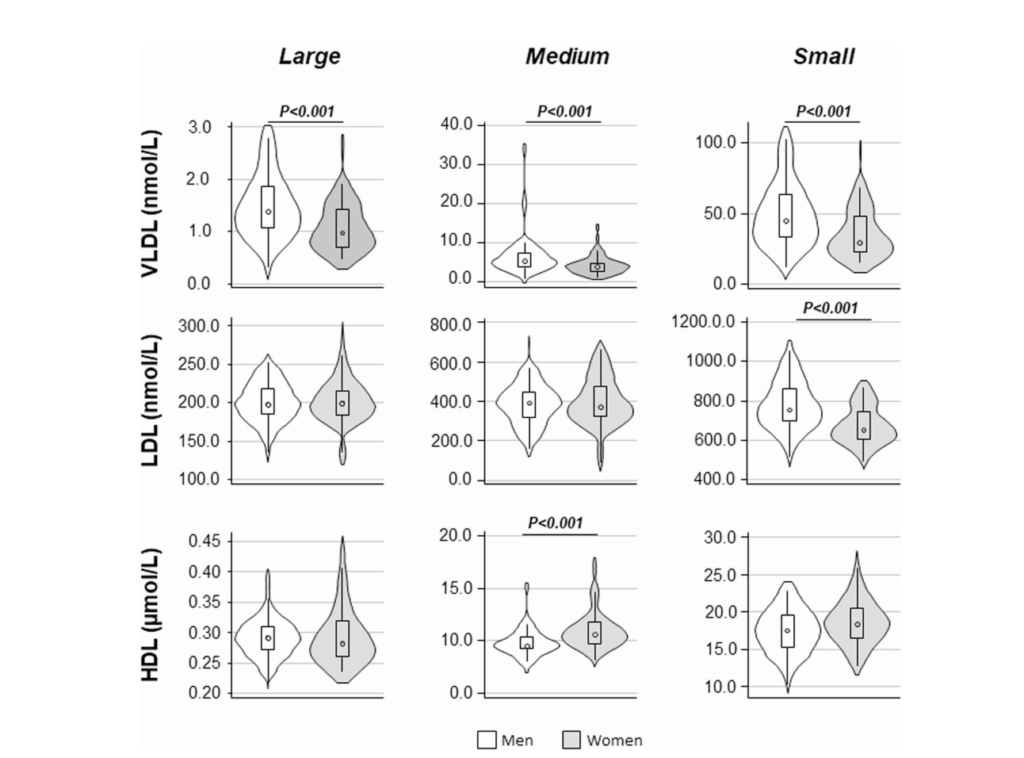A recent study published in Lipids in Health and Disease (Santisteban et al., 2025) offers a new perspective on how sex and body mass index influence lipoprotein metabolism, even in individuals considered metabolically healthy.
The research, authored by Victoria Santisteban(1,2), Anallely López-Yerena (1,3,4), Natàlia Muñoz-Garcia (1), Gemma Vilahur (1,5), Lina Badimon (1,5,6), and Teresa Padró (1,5), precisely characterized lipoprotein particles —VLDL, LDL, and HDL— by analyzing their size, number, and composition, and identifying patterns associated with early cardiovascular risk using ¹H-NMR spectroscopy and the Liposcale® test.

The study was designed to assess how sex and obesity modulate the lipoprotein profile in the absence of classical cardiovascular risk factors.
A total of 101 adults aged 25 to 60 years were included, all with overweight or obesity, but considered metabolically healthy according to ATP-III criteria: normal blood pressure, glucose, and lipid values, and no pharmacological treatment.
Serum samples were analyzed using the Liposcale® test, based on proton nuclear magnetic resonance (¹H-NMR) spectroscopy. This approach allowed a detailed assessment of the distribution and lipid content of VLDL, LDL, and HDL particles, identifying early alterations associated with body mass index and sex.
The results were clear: men exhibited a more atherogenic lipoprotein profile than women, despite having a similar BMI.
Specifically, men showed:
In contrast, women displayed a more favorable profile, with a higher number of HDL particles and slightly larger LDL size. These differences may be related to hormonal factors —such as the protective effects of estrogens on lipid metabolism— as well as to greater insulin sensitivity and hepatic lipoprotein clearance in premenopausal women.
These findings reinforce the importance of considering biological sex as a critical variable in cardiovascular risk assessment, as lipid alterations can manifest differently in men and women even before clinical disease appears.

Although all participants presented low cardiovascular risk according to the REGICOR index (median 2%), those with higher values consistently showed increased VLDL-c, VLDL-tg, VLDL particle number, and remnant cholesterol, regardless of sex or obesity level.
These results demonstrate that early alterations in lipoprotein composition and distribution may precede clinical manifestations of risk, and that detecting them requires advanced analytical tools such as the Liposcale® test.
By providing a detailed characterization of lipid metabolism, Liposcale® enables the identification of individuals with residual cardiovascular risk —those who, despite having a normal conventional lipid profile, present an atherogenic lipoprotein pattern— and supports the design of personalized preventive strategies tailored to sex, age, and metabolic condition.
Overall, this study highlights that measuring what traditionally remains unseen —the lipoprotein particles themselves— is essential for advancing toward earlier, more precise, and more personalized cardiovascular prevention.
Read the full article here